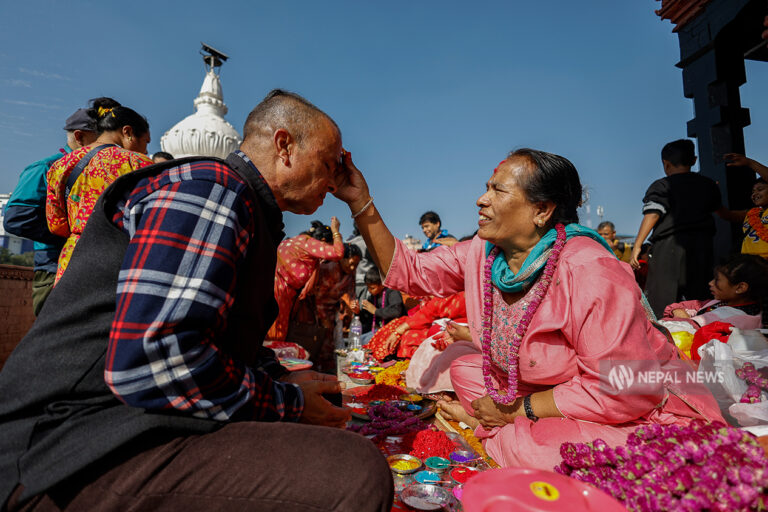

KATHMANDU: The five-day-long Yama Panchak and Tihar festival concluded on Thursday with sisters applying Bhai Tika to their brothers, following the centuries-old Hindu tradition.
Celebrated annually on Kartik Shukla Dwitiya, Bhai Tika marks the final and most significant day of Tihar, Nepal’s second-largest festival.
On this day, sisters apply multi-colored tika—traditionally five or seven colors—to their brothers’ foreheads, wishing them longevity, health, and prosperity. With the conclusion of Bhai Tika today, the Tihar festival has officially ended across the country.
After receiving tika from their sisters, brothers also return the gesture by applying tika to their sisters.
According to religious scholar and member of the Nepal Calendar Determination Committee, Prof. Dr. Devmani Bhattara, worshipping brothers during Bhai Tika brings eternal good fortune and prosperity to sisters, as mentioned in Hindu scriptures.
Although the auspicious time (sait) is not mandatory throughout the day, the committee had announced 11:39 AM as the most favorable time for those seeking it.
The state leadership also performed the tika ritual at the same auspicious hour, in accordance with traditional belief.
During the ritual, sisters worship deities including Diyo (lamp), Kalash (vessel), and Lord Ganesh, and offer prayers to eight immortal beings (Ashta Chiranjivi)—Markandeya, Ashwatthama, Bali, Vyasa, Hanuman, Vibhishana, Kripacharya, and Parashurama—along with Chitragupta, Yamraj, Yamuna, and Dharmaraj.
After lighting oil lamps and performing rituals, sisters adorn their brothers with tika and garlands made of marigold, makhamali (globe amaranth), and chrysanthemum flowers, symbolizing love and blessings.
Although social media has popularized the idea of applying a seven-colored tika, religious texts specify five main colors—red, white, yellow, green, and blue, according to Dr. Bhattarai.
After the tika, sisters serve traditional delicacies such as sel roti, walnut, and spicy condiments, while brothers express gratitude by gifting clothes, money, and ornaments as tokens of love and respect.
For those without sisters, the Bal Gopaleshwar Temple in the middle of Rani Pokhari in Kathmandu is specially opened only once a year—on this day—allowing devotees to receive tika and blessings.
Similarly, many without siblings also visit the Khanjaneswor Mahadev Temple in Jayabageshwori, where the tradition of offering prayers and receiving tika continues.
From early morning, these temples were crowded with devotees marking the closing chapter of this year’s Tihar festival.